List of Available Videos
2025
 How to Apply for the DO-IT Scholars ProgramThrough this video, students, parents, and high school educators can learn about applying to the DO-IT Scholars Program. DO-IT Scholars is a college-preparation program for high school students with disabilities who reside in WA state.
How to Apply for the DO-IT Scholars ProgramThrough this video, students, parents, and high school educators can learn about applying to the DO-IT Scholars Program. DO-IT Scholars is a college-preparation program for high school students with disabilities who reside in WA state. DO-IT Scholar Profile: KK, a DO-IT Scholar and Ambassador, shares their thoughts about participation in the DO-IT Scholars program.
DO-IT Scholar Profile: KK, a DO-IT Scholar and Ambassador, shares their thoughts about participation in the DO-IT Scholars program. DO-IT Scholar Profile: DustineDustine, a DO-IT Scholar and Ambassador, shares his thoughts about participation in the DO-IT Scholars program.
DO-IT Scholar Profile: DustineDustine, a DO-IT Scholar and Ambassador, shares his thoughts about participation in the DO-IT Scholars program. DO-IT Scholar Profile: RandyRandy, a DO-IT Scholar and Ambassador, shares his thoughts about participation in the DO-IT Scholars program.
DO-IT Scholar Profile: RandyRandy, a DO-IT Scholar and Ambassador, shares his thoughts about participation in the DO-IT Scholars program. DO-IT Scholar Profile: KaylaDO-IT Scholar Kayla shares information about experiences at school, in the community, and with the DO-IT Program.
DO-IT Scholar Profile: KaylaDO-IT Scholar Kayla shares information about experiences at school, in the community, and with the DO-IT Program.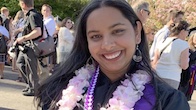 DO-IT Scholar Profile: AnitaDO-IT Scholar Anita shares information about experiences at school, in the community, and with the DO-IT Program.
DO-IT Scholar Profile: AnitaDO-IT Scholar Anita shares information about experiences at school, in the community, and with the DO-IT Program.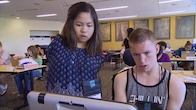 How to Apply for the DO-IT Scholars Program - ClippedThrough this video, students, parents, and high school educators can learn about applying to the DO-IT Scholars Program. DO-IT Scholars is a college-preparation program for high school students with disabilities who reside in WA state.
How to Apply for the DO-IT Scholars Program - ClippedThrough this video, students, parents, and high school educators can learn about applying to the DO-IT Scholars Program. DO-IT Scholars is a college-preparation program for high school students with disabilities who reside in WA state. Teaching Accessible ComputingFaculty authors of the new online "Teaching Accessible Computing" text talk about a best practice from their chapter.
Teaching Accessible ComputingFaculty authors of the new online "Teaching Accessible Computing" text talk about a best practice from their chapter.
2024
 Supporting Neurodivergent Learners on CampusHigh School and College students, as well as staff at higher education institutions, share perspectives about effective teaching strategies for neurodivergent learners.
Supporting Neurodivergent Learners on CampusHigh School and College students, as well as staff at higher education institutions, share perspectives about effective teaching strategies for neurodivergent learners. What You Should Know about Your Students with DisabilitiesStudents share information about what they wish their faculty knew about students with disabilities.
What You Should Know about Your Students with DisabilitiesStudents share information about what they wish their faculty knew about students with disabilities.
2023
 Moving DO-IT Scholars OnlineThe DO-IT Scholars program prepares high school students with disabilities for postsecondary education. This video shares how this intensive on-campus program transitioned online during the pandemic.
Moving DO-IT Scholars OnlineThe DO-IT Scholars program prepares high school students with disabilities for postsecondary education. This video shares how this intensive on-campus program transitioned online during the pandemic.
2022
 Engaging Individuals with Disabilities in an Engineering Research CenterThis video describes myriad ways that NSF-funded Engineering Research Centers can increase accessibility for individuals with disabilities.
Engaging Individuals with Disabilities in an Engineering Research CenterThis video describes myriad ways that NSF-funded Engineering Research Centers can increase accessibility for individuals with disabilities. Including Universal Design in the Engineering Curriculum Discover how learning around universal design prepares engineering students to design products that are usable by a wide variety of potential users, including people with disabilities.
Including Universal Design in the Engineering Curriculum Discover how learning around universal design prepares engineering students to design products that are usable by a wide variety of potential users, including people with disabilities. Providing Accessible Informal STEM LearningRepresentatives from informal STEM learning (ISL) programs share their perspective on accessible ISL offerings.
Providing Accessible Informal STEM LearningRepresentatives from informal STEM learning (ISL) programs share their perspective on accessible ISL offerings. Mentoring Students with Disabilities in Research ExperiencesIn this video, students with disabilities share their REU experiences and offer guidance to faculty about how they can mentor students with disabilities in research.
Mentoring Students with Disabilities in Research ExperiencesIn this video, students with disabilities share their REU experiences and offer guidance to faculty about how they can mentor students with disabilities in research. Creating Accessible DocumentsThis video explains why and how to create electronic documents that are accessible to all users.
Creating Accessible DocumentsThis video explains why and how to create electronic documents that are accessible to all users. Supporting Computer Science Student Mental HealthLong hours, lacking a sense of belonging, and fear of failure are just some stressors that affect Computer Science students and professionals alike, leading to burnout, anxiety, and depression.
Supporting Computer Science Student Mental HealthLong hours, lacking a sense of belonging, and fear of failure are just some stressors that affect Computer Science students and professionals alike, leading to burnout, anxiety, and depression. AccessADVANCE: Making STEM Departments More Inclusive of Faculty with DisabilitiesSystematically reviewing and improving campus communications, worksites, meetings, technology, events, and services to make them more accessible and inclusive to faculty members with disabilities.
AccessADVANCE: Making STEM Departments More Inclusive of Faculty with DisabilitiesSystematically reviewing and improving campus communications, worksites, meetings, technology, events, and services to make them more accessible and inclusive to faculty members with disabilities. Women with Disabilities in Academic CareersThis video profiles women faculty members with disabilities sharing their experiences and perspectives.
Women with Disabilities in Academic CareersThis video profiles women faculty members with disabilities sharing their experiences and perspectives.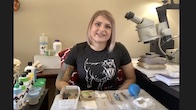 Virtual Access to Informal STEM LearningThis video presentation shares student perspectives from the NSF-funded Access to Informal STEM Learning (AccessISL) project, which is creating promising practices and resources that can lead to making ISL activities and resources more welcoming and accessible to individuals with disabilities nationwide.
Virtual Access to Informal STEM LearningThis video presentation shares student perspectives from the NSF-funded Access to Informal STEM Learning (AccessISL) project, which is creating promising practices and resources that can lead to making ISL activities and resources more welcoming and accessible to individuals with disabilities nationwide.
2020
 DO-IT Introduction by the Council for Exceptional Children This video, produced by the Council for Exceptional Children, features staff and students of the DO-IT Center, who share information about the DO-IT Scholars program and its impact on students with disabilities as they prepare for college and careers.
DO-IT Introduction by the Council for Exceptional Children This video, produced by the Council for Exceptional Children, features staff and students of the DO-IT Center, who share information about the DO-IT Scholars program and its impact on students with disabilities as they prepare for college and careers. Meet the DO-IT ScholarsThis video features staff and students of the DO-IT Center, who share information about the DO-IT Scholars program and its impact on students with disabilities as they prepare for college and careers.
Meet the DO-IT ScholarsThis video features staff and students of the DO-IT Center, who share information about the DO-IT Scholars program and its impact on students with disabilities as they prepare for college and careers.
2019
 Teamwork: Making IT Accessible at the University of Washington and StatewideThis video highlights efforts at the University of Washington and other state schools regarding the procurement, development and use of accessible IT.
Teamwork: Making IT Accessible at the University of Washington and StatewideThis video highlights efforts at the University of Washington and other state schools regarding the procurement, development and use of accessible IT. DO-IT Scholar Profile: KK, a participant of the DO-IT Scholars program, shares information about involvement in the program and their experiences in college.
DO-IT Scholar Profile: KK, a participant of the DO-IT Scholars program, shares information about involvement in the program and their experiences in college. Pursuit of a More Equitable World: Disability Culture and Society (John Kemp Talk #2)This video shares portions of a presentation at the UW, led by one of our nation’s most prolific and celebrated advocates for people with disabilities, John Kemp.
Pursuit of a More Equitable World: Disability Culture and Society (John Kemp Talk #2)This video shares portions of a presentation at the UW, led by one of our nation’s most prolific and celebrated advocates for people with disabilities, John Kemp.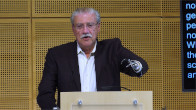 Pursuit of a More Equitable World: College and Careers (John Kemp Talk #1)This video shares portions of a presentation at the UW, led by one of our nation’s most prolific and celebrated advocates for people with disabilities, John Kemp.
Pursuit of a More Equitable World: College and Careers (John Kemp Talk #1)This video shares portions of a presentation at the UW, led by one of our nation’s most prolific and celebrated advocates for people with disabilities, John Kemp. Our Technology for Equal Access: Learning DisabilitiesStudents with learning disabilities talk about the assistive technology they use in educational settings.
Our Technology for Equal Access: Learning DisabilitiesStudents with learning disabilities talk about the assistive technology they use in educational settings. Our Technology for Equal Access: Mobility ImpairmentsStudents with mobility impairments talk about the assistive technology they use in educational settings.
Our Technology for Equal Access: Mobility ImpairmentsStudents with mobility impairments talk about the assistive technology they use in educational settings. Our Technology for Equal Access: Sensory ImpairmentsStudents with sensory impairments talk about the assistive technology they use in educational settings.
Our Technology for Equal Access: Sensory ImpairmentsStudents with sensory impairments talk about the assistive technology they use in educational settings. Technology Advancements and Disability IdentityParticipants of DO-IT programs discuss emerging technology that can enhance the human body and mind.
Technology Advancements and Disability IdentityParticipants of DO-IT programs discuss emerging technology that can enhance the human body and mind. Students with Disabilities at the University of Washington: Building Teams for SuccessStudents with disabilities, faculty, and staff at the University of Washington talk about reasonable accommodations and equal access to education.
Students with Disabilities at the University of Washington: Building Teams for SuccessStudents with disabilities, faculty, and staff at the University of Washington talk about reasonable accommodations and equal access to education.
2018
 Teaching Accessibility: Including Accessibility in Your Courses (3-minute version)Teaching about accessibility is a natural fit in many computing courses.
Teaching Accessibility: Including Accessibility in Your Courses (3-minute version)Teaching about accessibility is a natural fit in many computing courses. Teaching Accessibility: Including Accessibility in Your CoursesTeaching about accessibility is a natural fit in many computing courses.
Teaching Accessibility: Including Accessibility in Your CoursesTeaching about accessibility is a natural fit in many computing courses. Our Technology for Equal AccessStudents with disabilities discuss the technology they use to access school, work, and the community.
Our Technology for Equal AccessStudents with disabilities discuss the technology they use to access school, work, and the community.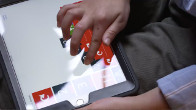 Accessible Programming with Blocks4AllThis video features the Blocks4All prototype programming environment, which makes blocks-based programming accessible on a touchscreen tablet computer.
Accessible Programming with Blocks4AllThis video features the Blocks4All prototype programming environment, which makes blocks-based programming accessible on a touchscreen tablet computer.
2017
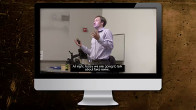 Making Videos AccessibleLearn what to consider when creating a video that it is accessible to all viewers, from pre-production techniques to the provision of captioning and audio description.
Making Videos AccessibleLearn what to consider when creating a video that it is accessible to all viewers, from pre-production techniques to the provision of captioning and audio description.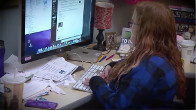 Graduate School and Students with DisabilitiesGraduate students with disabilities, working with faculty and disability services, can have successful grad school experiences, complete their degrees, and enter rewarding careers.
Graduate School and Students with DisabilitiesGraduate students with disabilities, working with faculty and disability services, can have successful grad school experiences, complete their degrees, and enter rewarding careers. The Job Search and Disclosing your DisabilityInterns and employees with disabilities should be strategic about disclosing their disability to their employer.
The Job Search and Disclosing your DisabilityInterns and employees with disabilities should be strategic about disclosing their disability to their employer. The Access Technology Center at the University of WashingtonTour the UW facility that helps people with disabilities effectively use technology and developers create accessible web pages, documents, videos, and software.
The Access Technology Center at the University of WashingtonTour the UW facility that helps people with disabilities effectively use technology and developers create accessible web pages, documents, videos, and software. Welcome to Mary Gates Hall: Advocates for Equal Access Take a short tour of the Access Technology Center, Disability Resources of Students, and the D Center on the Seattle campus of the University of Washington in Seattle.
Welcome to Mary Gates Hall: Advocates for Equal Access Take a short tour of the Access Technology Center, Disability Resources of Students, and the D Center on the Seattle campus of the University of Washington in Seattle. Using a Screen ReaderAn expert screen reader user demonstrates how blind people use the web.
Using a Screen ReaderAn expert screen reader user demonstrates how blind people use the web. Recruiting and Retaining Employees with DisabilitiesEmployers can take steps to better recruit and retain employees with disabilities.
Recruiting and Retaining Employees with DisabilitiesEmployers can take steps to better recruit and retain employees with disabilities. 20 Tips for Teaching an Accessible Online CourseSheryl Burgstahler, Ph.D., Director of Accessible Technology Services and founder of DO-IT, offers a lecture to faculty in which she offers 20 tips, both in educational practices and in more technical practices, for how faculty can make their courses more accessible to students with disabilities.
20 Tips for Teaching an Accessible Online CourseSheryl Burgstahler, Ph.D., Director of Accessible Technology Services and founder of DO-IT, offers a lecture to faculty in which she offers 20 tips, both in educational practices and in more technical practices, for how faculty can make their courses more accessible to students with disabilities. Disability and Accessibility in Engineering: What Can Educators Do?Engineering is enhanced through the talents and perspectives of people with disabilities.
Disability and Accessibility in Engineering: What Can Educators Do?Engineering is enhanced through the talents and perspectives of people with disabilities. Quorum: An Accessible Programming LanguageThis video serves as an introduction to the Quorum programming language which is designed to be accessible to individuals with disabilities and is widely used in schools for the blind.
Quorum: An Accessible Programming LanguageThis video serves as an introduction to the Quorum programming language which is designed to be accessible to individuals with disabilities and is widely used in schools for the blind.
2016
 Leading the Way: Computing Students and Professionals with DisabilitiesSuccessful computing students and professionals with disabilities share their experiences.
Leading the Way: Computing Students and Professionals with DisabilitiesSuccessful computing students and professionals with disabilities share their experiences. Quorum: An Accessible Programming Language (3-minute version)The programming language Quorum was designed with individuals with visual impairments in mind, is accessible to individuals with disabilities.
Quorum: An Accessible Programming Language (3-minute version)The programming language Quorum was designed with individuals with visual impairments in mind, is accessible to individuals with disabilities. DO-IT Scholars Discuss the Importance of CollegeParticipants of the DO-IT Scholars program discuss why they believe it is important to attend college.
DO-IT Scholars Discuss the Importance of CollegeParticipants of the DO-IT Scholars program discuss why they believe it is important to attend college. DO-IT Program - UW 360DO-IT is highlighted on UW 360, an Emmy Award-winning show that profiles the fascinating people, programs and community connections that define the University of Washington.
DO-IT Program - UW 360DO-IT is highlighted on UW 360, an Emmy Award-winning show that profiles the fascinating people, programs and community connections that define the University of Washington. Including Universal Design in the Engineering CurriculumIt is important that we train engineers to be versed in the areas of universal design and accessibility.
Including Universal Design in the Engineering CurriculumIt is important that we train engineers to be versed in the areas of universal design and accessibility. Broadening Participation in Engineering to Include People with DisabilitiesEngineering can be a great career option for people with disabilities, provided they receive the right support and accommodations.
Broadening Participation in Engineering to Include People with DisabilitiesEngineering can be a great career option for people with disabilities, provided they receive the right support and accommodations.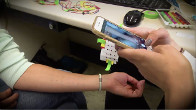 Engaging Individuals with Disabilities in an Engineering Research CenterStakeholders and collaborators in DO-IT's AccessERC project discuss how to help ensure that NSF-funded Engineering Research Centers are welcoming and accessible to individuals with disabilities.
Engaging Individuals with Disabilities in an Engineering Research CenterStakeholders and collaborators in DO-IT's AccessERC project discuss how to help ensure that NSF-funded Engineering Research Centers are welcoming and accessible to individuals with disabilities. Quality Education Is AccessibleQuality education needs to be inclusive of everyone in the classroom, including students with disabilities.
Quality Education Is AccessibleQuality education needs to be inclusive of everyone in the classroom, including students with disabilities. What's It Like?On a college campus, students share their experiences as an individual with a disability.
What's It Like?On a college campus, students share their experiences as an individual with a disability.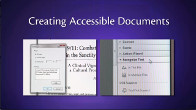 Creating Accessible DocumentsThis video explains why and how to create electronic documents that are accessible to all users.
Creating Accessible DocumentsThis video explains why and how to create electronic documents that are accessible to all users.
2015
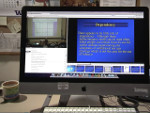 Captioning Lecture Capture Videos: A Promising Teaching PracticeStudents and educators show how captioning videos in a lecture capture application helps everyone gain knowledge.
Captioning Lecture Capture Videos: A Promising Teaching PracticeStudents and educators show how captioning videos in a lecture capture application helps everyone gain knowledge. Equal Access: Universal Design of an Academic DepartmentPractitioners tell how universal design can make an academic department accessible to all students and faculty.
Equal Access: Universal Design of an Academic DepartmentPractitioners tell how universal design can make an academic department accessible to all students and faculty.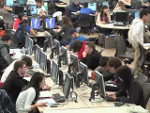 How Can We Include Students with Disabilities in Computing Courses?With the increasing demand for computing professionals, it's important that students with disabilities are included in computing courses.
How Can We Include Students with Disabilities in Computing Courses?With the increasing demand for computing professionals, it's important that students with disabilities are included in computing courses. How Can We Encourage Students with Disabilities to Pursue Computing?One woman tells instructors on how their behaviors impact a student's decision to pursue a computing field.
How Can We Encourage Students with Disabilities to Pursue Computing?One woman tells instructors on how their behaviors impact a student's decision to pursue a computing field.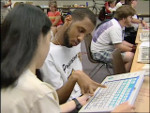 Working Together: People with Disabilities and Computer TechnologyHigh school and college students with a wide variety of disabilities share their experiences using computers and demonstrate the technology they use.
Working Together: People with Disabilities and Computer TechnologyHigh school and college students with a wide variety of disabilities share their experiences using computers and demonstrate the technology they use. Working Together: Computers and People with Sensory ImpairmentsPeople with visual and hearing impairments demonstrate computer technology for school and work.
Working Together: Computers and People with Sensory ImpairmentsPeople with visual and hearing impairments demonstrate computer technology for school and work.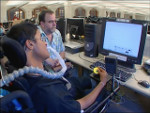 Working Together: Computers and People with Mobility ImpairmentsPeople with mobility impairments demonstrate technology that provides access to all functions of computer hardware and software.
Working Together: Computers and People with Mobility ImpairmentsPeople with mobility impairments demonstrate technology that provides access to all functions of computer hardware and software. Working Together: Computers and People with Learning DisabilitiesStudents and workers with learning disabilities demonstrate computer-based tools and strategies that promote their academic and career success.
Working Together: Computers and People with Learning DisabilitiesStudents and workers with learning disabilities demonstrate computer-based tools and strategies that promote their academic and career success. Real Connections: Making Distance Learning Accessible to EveryoneEducators and students share guidelines for designing Internet-based distance learning courses to fully include all students, including those with disabilities.
Real Connections: Making Distance Learning Accessible to EveryoneEducators and students share guidelines for designing Internet-based distance learning courses to fully include all students, including those with disabilities. Equal Access: Universal Design of InstructionThe application of universal design strategies can make instruction in a classroom, online, or in a tutoring center accessible to all students.
Equal Access: Universal Design of InstructionThe application of universal design strategies can make instruction in a classroom, online, or in a tutoring center accessible to all students. Equal Access: Universal Design of Computer LabsEducators tell how to make computer labs welcoming and accessible to people with disabilities.
Equal Access: Universal Design of Computer LabsEducators tell how to make computer labs welcoming and accessible to people with disabilities.
2014
 Captions: Improving Access to Postsecondary EducationProfessors, students, and IT administrators share the benefits of using captions for videos in postsecondary education.
Captions: Improving Access to Postsecondary EducationProfessors, students, and IT administrators share the benefits of using captions for videos in postsecondary education. Communication Access Realtime Translation: CART Services for Deaf and Hard-of-Hearing PeopleEducators tell how Communication Access Realtime Translation (CART) provides access to auditory communication for individuals who are deaf.
Communication Access Realtime Translation: CART Services for Deaf and Hard-of-Hearing PeopleEducators tell how Communication Access Realtime Translation (CART) provides access to auditory communication for individuals who are deaf. Access to Technology in the Workplace: In Our Own WordsEmployees with disabilities how accessible technology benefits them in the workplace.
Access to Technology in the Workplace: In Our Own WordsEmployees with disabilities how accessible technology benefits them in the workplace.
2013
 IT Accessibility: What Web Developers Have to SayWeb designers and developers discuss strategies for creating websites that are accessible to all users.
IT Accessibility: What Web Developers Have to SayWeb designers and developers discuss strategies for creating websites that are accessible to all users. IT Accessibility: What Campus Leaders Have to Say (6-minute Version)University presidents, chief information officers, and other IT leaders discuss the importance of and strategies for making IT accessible campus-wide.
IT Accessibility: What Campus Leaders Have to Say (6-minute Version)University presidents, chief information officers, and other IT leaders discuss the importance of and strategies for making IT accessible campus-wide.
2012
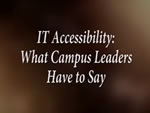 IT Accessibility: What Campus Leaders Have to Say (15-minute Version)University presidents, chief information officers, and other IT leaders discuss the importance and strategies for making IT accessible campus-wide.
IT Accessibility: What Campus Leaders Have to Say (15-minute Version)University presidents, chief information officers, and other IT leaders discuss the importance and strategies for making IT accessible campus-wide.
2011
 STEM and People with DisabilitiesEducators and students tell how science, technology, engineering, and mathematics (STEM) activities can be made accessible and how students with disabilities can prepare for these fields.
STEM and People with DisabilitiesEducators and students tell how science, technology, engineering, and mathematics (STEM) activities can be made accessible and how students with disabilities can prepare for these fields. It's Your CareerCollege students with disabilities tell about the value of work-based learning experiences and how to get these opportunities.
It's Your CareerCollege students with disabilities tell about the value of work-based learning experiences and how to get these opportunities. Finding Gold: Hiring the Best and the BrightestEmployers in cooperative education, internship, and other work-based learning programs show how to fully include participants with disabilities.
Finding Gold: Hiring the Best and the BrightestEmployers in cooperative education, internship, and other work-based learning programs show how to fully include participants with disabilities. DO-IT Scholars 2011Participants describe key aspects of the DO-IT Scholars program for high school students with disabilities.
DO-IT Scholars 2011Participants describe key aspects of the DO-IT Scholars program for high school students with disabilities. Access to the Future: Preparing Students with Disabilities for CareersCareer development staff share ideas for making services accessible to students with disabilities.
Access to the Future: Preparing Students with Disabilities for CareersCareer development staff share ideas for making services accessible to students with disabilities.
2010
 Returning from Service: College and IT Careers for VeteransVeterans and postsecondary educators share strategies that create welcoming and accessible environments for wounded warriors.
Returning from Service: College and IT Careers for VeteransVeterans and postsecondary educators share strategies that create welcoming and accessible environments for wounded warriors.
2009
 DO-IT Scholar Profile: NathanNathan, a college freshman with a disability, discusses his hobbies, career goals, academic studies, and technology that assists with math and reading.
DO-IT Scholar Profile: NathanNathan, a college freshman with a disability, discusses his hobbies, career goals, academic studies, and technology that assists with math and reading.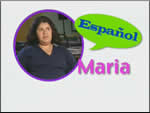 DO-IT Scholar Profile: MariaMaria, a college freshman, discusses her academic interests, how accessible technology helps her complete school work, and how she found the resources she needed as a student with a disability applying for college.
DO-IT Scholar Profile: MariaMaria, a college freshman, discusses her academic interests, how accessible technology helps her complete school work, and how she found the resources she needed as a student with a disability applying for college. DO-IT Scholar Profile: MackMack, a high school senior with cerebral palsy, talks about the importance of a positive outlook on life, how accommodations such as speech recognition software have helped him complete assignments for school, and his career plans.
DO-IT Scholar Profile: MackMack, a high school senior with cerebral palsy, talks about the importance of a positive outlook on life, how accommodations such as speech recognition software have helped him complete assignments for school, and his career plans. DO-IT Scholar Profile: HeidiHeidi, a college student on the autism spectrum, talks about starting a high school club for students with disabilities, learning communication and technical skills, and experiencing the DO-IT Scholars Program.
DO-IT Scholar Profile: HeidiHeidi, a college student on the autism spectrum, talks about starting a high school club for students with disabilities, learning communication and technical skills, and experiencing the DO-IT Scholars Program.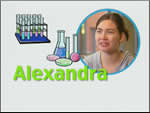 DO-IT Scholar Profile: AlexandraAlexandra, a college senior who has a visual impairment, discusses her work as a science major, her career goals, accommodations she uses, and her experiences with the DO-IT Scholars program.
DO-IT Scholar Profile: AlexandraAlexandra, a college senior who has a visual impairment, discusses her work as a science major, her career goals, accommodations she uses, and her experiences with the DO-IT Scholars program. World Wide Access: Accessible Web DesignPeople who design and support websites share how to make web pages accessible to people with disabilities.
World Wide Access: Accessible Web DesignPeople who design and support websites share how to make web pages accessible to people with disabilities.
2007
 Part of Me, Not All of MeTeens with disabilities share their interests and activities, showing that their disabilities are only one aspect of their identity.
Part of Me, Not All of MeTeens with disabilities share their interests and activities, showing that their disabilities are only one aspect of their identity. Self-Examination: How Accessible Is Your Campus?Following guidelines can make a postsecondary institution welcoming and accessible to everyone, including students, faculty, and staff with disabilities.
Self-Examination: How Accessible Is Your Campus?Following guidelines can make a postsecondary institution welcoming and accessible to everyone, including students, faculty, and staff with disabilities. Invisible Disabilities and Postsecondary EducationStudent self-determination combined with effective accommodations for disabilities with learning disabilities, attention deficits, autism spectrum disorders, and other issues that are not readily apparent can result in successful outcomes.
Invisible Disabilities and Postsecondary EducationStudent self-determination combined with effective accommodations for disabilities with learning disabilities, attention deficits, autism spectrum disorders, and other issues that are not readily apparent can result in successful outcomes.
2006
 Taking Charge 3: Five Stories of Success and Self-DeterminationFive teens with disabilities share how they live self-determined, fulfilling lives.
Taking Charge 3: Five Stories of Success and Self-DeterminationFive teens with disabilities share how they live self-determined, fulfilling lives. Taking Charge 2: Two Stories of Success and Self-DeterminationTwo high school students with disabilities share how they succeed in school and otherwise live self-determined lives.
Taking Charge 2: Two Stories of Success and Self-DeterminationTwo high school students with disabilities share how they succeed in school and otherwise live self-determined lives.
2005
 Equal Access: Science and Students with Sensory ImpairmentsThe application of universal design principles can make libraries accessible to all visitors.
Equal Access: Science and Students with Sensory ImpairmentsThe application of universal design principles can make libraries accessible to all visitors. DO-IT Pals: An Internet CommunityDO-IT Pals participants talk about the value of peer and mentor support in this online community for people with disabilities.
DO-IT Pals: An Internet CommunityDO-IT Pals participants talk about the value of peer and mentor support in this online community for people with disabilities.
2004
 Equal Access: Campus LibrariesLibrarians and patrons show how to apply universal design principles to make libraries accessible to everyone, including those with disabilities.
Equal Access: Campus LibrariesLibrarians and patrons show how to apply universal design principles to make libraries accessible to everyone, including those with disabilities. How DO-IT Does ItThe DO-IT Director and support staff share practices employed by DO-IT programs to increase the success of young people with disabilities in college and careers.
How DO-IT Does ItThe DO-IT Director and support staff share practices employed by DO-IT programs to increase the success of young people with disabilities in college and careers. Equal Access: Student ServicesPractitioners show how to apply universal design principles to make postsecondary student services accessible to all students
Equal Access: Student ServicesPractitioners show how to apply universal design principles to make postsecondary student services accessible to all students
2002
 Computer Access: In Our Own WordsStudents with disabilities demonstrate the uses of assistive technology and computer applications.
Computer Access: In Our Own WordsStudents with disabilities demonstrate the uses of assistive technology and computer applications.
2001
 Learn and Earn: Tips for TeensStudents with disabilities show how they benefit from work-based learning experiences.
Learn and Earn: Tips for TeensStudents with disabilities show how they benefit from work-based learning experiences. Learn and Earn: Supporting TeensParents, teachers, and mentors encourage teens with disabilities to participate in work-based learning experiences to more effectively promote them for young people with disabilities.
Learn and Earn: Supporting TeensParents, teachers, and mentors encourage teens with disabilities to participate in work-based learning experiences to more effectively promote them for young people with disabilities. Building the Team: Faculty, Staff, and Students Working TogetherStudents with disabilities, faculty and staff share how to create an inclusive postsecondary learning environment.
Building the Team: Faculty, Staff, and Students Working TogetherStudents with disabilities, faculty and staff share how to create an inclusive postsecondary learning environment.
2000
 STEM: Science, Technology, Engineering, and Mathematics at the University of WashingtonStudents and faculty highlight exciting academic programs at the University of Washington that provide effective learning environments for students with characteristics with respect to race, ethnicity, gender and disability.
STEM: Science, Technology, Engineering, and Mathematics at the University of WashingtonStudents and faculty highlight exciting academic programs at the University of Washington that provide effective learning environments for students with characteristics with respect to race, ethnicity, gender and disability.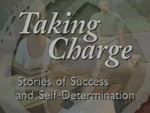 Taking Charge 1: Three Stories of Success and Self-DeterminationSuccessful youth and adults with disabilities share how they live successful, self-determined lives.
Taking Charge 1: Three Stories of Success and Self-DeterminationSuccessful youth and adults with disabilities share how they live successful, self-determined lives. DO-IT Receives a Golden Apple AwardDO-IT Scholars are seen in action and DO-IT Director, Sheryl Burgstahler, accepts the Golden Apple Award.
DO-IT Receives a Golden Apple AwardDO-IT Scholars are seen in action and DO-IT Director, Sheryl Burgstahler, accepts the Golden Apple Award.
1998
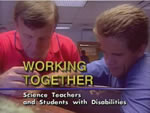 Working Together: Science Teachers and Students with DisabilitiesHigh school students suggest ways to make science activities more accessible.
Working Together: Science Teachers and Students with DisabilitiesHigh school students suggest ways to make science activities more accessible. The Winning Equation: Access + Attitude = Success in Math and ScienceStudents suggest ways to make science activities more accessible.
The Winning Equation: Access + Attitude = Success in Math and ScienceStudents suggest ways to make science activities more accessible.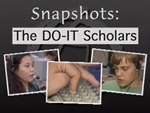 Snapshots: The DO-IT ScholarsHigh school participants describe the DO-IT Scholars program and how it contributes to their success.
Snapshots: The DO-IT ScholarsHigh school participants describe the DO-IT Scholars program and how it contributes to their success. Opening Doors: Mentoring on the InternetStudents share how they develop supportive relationships with peers and mentors on the Internet through the DO-IT program.
Opening Doors: Mentoring on the InternetStudents share how they develop supportive relationships with peers and mentors on the Internet through the DO-IT program. Moving On: The Two-Four StepStudents with disabilities and practitioners share tips for making successful transitions from two- to four-year postsecondary institutions.
Moving On: The Two-Four StepStudents with disabilities and practitioners share tips for making successful transitions from two- to four-year postsecondary institutions.
1997
 Camp: Beyond SummerTeachers and students share how Internet experiences for summer camp programs can fully include children and youth with disabilities.
Camp: Beyond SummerTeachers and students share how Internet experiences for summer camp programs can fully include children and youth with disabilities.
1996
 College: You Can DO-IT!Students with disabilities and staff share advice for success in college.
College: You Can DO-IT!Students with disabilities and staff share advice for success in college.
1995
 Working Together: Faculty and Students with DisabilitiesStudents with disabilities and faculty share their experiences in achieving college successes.
Working Together: Faculty and Students with DisabilitiesStudents with disabilities and faculty share their experiences in achieving college successes.
1994
 Scholars 1994Participants in the first DO-IT program in 1993 share their experiences.
Scholars 1994Participants in the first DO-IT program in 1993 share their experiences.
